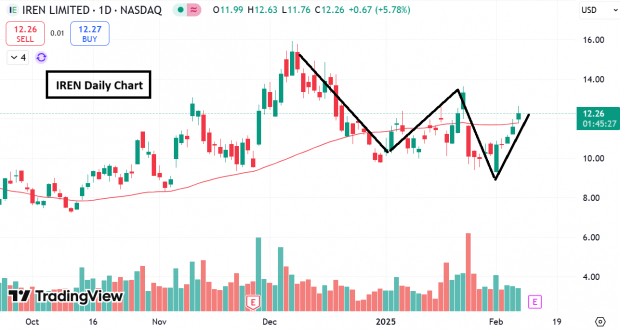Harnessing Relative Strength: Spotting Investment Opportunities
The Power of Relative Strength
Relative strength, or RS, has proven to be a crucial tool in the investing landscape. It differs from the Relative Strength Index (RSI), focusing on price-based analysis. This method allows market analysts and traders to assess a stock’s performance compared to a benchmark like the S&P 500 Index or an industry sector.
Finding Opportunity in Market Declines
Understanding RS is easier when visualized. Imagine two groups of swimmers: one group is riding the ocean’s current while the other is swimming against it. Naturally, those swimming with the current will move faster. However, consider if one of the swimmers against the current is Michael Phelps, an Olympic gold medalist.
In investment terms, the “tide” represents the overall market trends. Approximately 75% of stocks typically move in line with the broader market. For instance, if the Nasdaq and S&P 500 drop by 1%, many stocks in your watchlist will likely follow suit. This is a common mistake among novice traders. Instead of observing the market, they often disengage in frustration during downturns. Yet, these challenging market conditions are the most critical times to focus. It’s essential to create your “Michael Phelps” watchlist, focusing on stocks that resist the downward trend. When market conditions improve, these stocks often show significant gains.
Three Stocks with Strong Relative Strength
While RS is a valuable indicator on its own, combining it with strong industry trends, effective chart patterns, and positive catalysts enhances its effectiveness. Below are three stocks currently demonstrating strong RS:
IREN: Capitalizing on Crypto and AI Trends
Listed as a Zacks Rank #2 (Buy), IREN Limited (IREN) operates institutional-grade data centers powered by renewable energy sources. The company’s strategy involves establishing facilities in regions with cost-effective and abundant renewable resources, catering to high-energy applications such as Bitcoin mining and artificial intelligence data processing.
Two significant catalysts support IREN’s growth:
- AI Infrastructure Growth: Industry giants like Alphabet (GOOGL) and Microsoft (MSFT) continue to invest heavily in expanding their AI capabilities, which drives demand for data centers that consume substantial energy.
- Bitcoin Demand: Historically, February ranks as one of the strongest months for Bitcoin. Recent discussions from the Trump administration’s “Crypto Czar” about potential U.S. “Bitcoin Reserve” strategies highlight a bullish outlook for the cryptocurrency sector.
Despite a challenging market environment, IREN’s shares gained over 5% on Friday, approaching the formation of a double-bottom base.

Image Source: TradingView
SERV: Revolutionizing Delivery with Robots
In urban areas like Miami, small delivery robots from Serve Robotics (SERV) have become a common sight. The company designs AI-driven, low-emissions delivery robots aimed at making delivery services more sustainable and cost-effective. Spin-off from Uber (UBER) in 2021, Serve has successfully completed thousands of deliveries in partnership with recognizable brands like Uber Eats and 7-Eleven.
SERV is leveraging its prior association with Uber to form partnerships with Shake Shack (SHAK) and Uber Eats for food deliveries. Their innovative approach eliminates the need for human couriers. Instead, a small robot autonomously delivers food, allowing customers to unlock and collect their orders via passcode. Analysts are optimistic, forecasting a 51.35% increase in earnings for the next quarter and a 38.01% rise for the total year of 2025.
From a chart perspective, SERV’s stock showed positive movement by rebounding from its 10-week moving average and forming a bullish engulfing pattern.

Image Source: TradingView
Explore more insights about the robotics industry here.
Futu Holdings: A Rising Star in Fintech
Overview of Futu Holdings
Futu Holdings (FUTU) is a prominent fintech company based in China, serving the Asian market. The firm acts as a full-service broker, providing access to stocks, ETFs, and bonds, alongside valuable educational resources and real-time market updates. Its trading community further enhances user engagement. Recently, the company reported a significant 21% increase in quarterly earnings year-over-year. On the last trading day, FUTU’s shares rose over 5% with trading volume at 148% above average. The stock appears to be forming a bullish pattern over the month.

Image Source: TradingView
Investment Insights
During market downturns, many novice investors may shy away; however, seasoned investors recognize the value in identifying stocks that remain strong amidst the turbulence. Recently, stocks such as IREN, SERV, and FUTU have shown relative resilience and potential for growth.
Exploring the Future of Energy
As global electricity demand continues to escalate, there is increasing pressure to transition away from fossil fuels like oil and natural gas. In this context, nuclear energy emerges as a viable alternative.
Recently, leaders from the U.S. and 21 other nations pledged to triple the world’s nuclear energy capacity. This significant shift may offer substantial profit opportunities for investors who strategically position themselves in stocks related to nuclear energy.
Our latest report, Atomic Opportunity: Nuclear Energy’s Comeback, delves into the major players and technologies steering this shift, highlighting three standout stocks expected to benefit most from this trend.
Download Atomic Opportunity: Nuclear Energy’s Comeback free today.
For the latest recommendations from Zacks Investment Research, you can access 7 Best Stocks for the Next 30 Days for free by clicking here.
Free Stock Analysis Reports:
- Microsoft Corporation (MSFT)
- Alphabet Inc. (GOOGL)
- Serve Robotics Inc. (SERV)
- Shake Shack, Inc. (SHAK)
- Uber Technologies, Inc. (UBER)
- Futu Holdings Limited Sponsored ADR (FUTU)
- IREN Limited (IREN)
To read this article on Zacks.com, click here.
Zacks Investment Research
The views and opinions expressed herein are solely those of the author and do not necessarily reflect those of Nasdaq, Inc.

